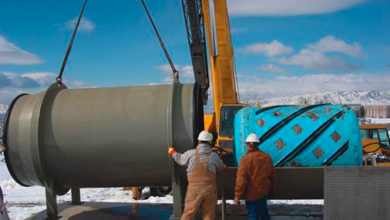What is a Vapor Chamber Heat Sink

In the quest for better cooling solutions, the vapor chamber heat sink has emerged as a powerful innovation in thermal management. Combining the efficient heat spreading capabilities of a vapor chamber with the traditional design of a heat sink, this technology helps keep high-performance electronic components cool under heavy loads. In this article, we’ll explore what a vapor chamber heat sink is, how it works, and why it’s becoming a popular choice for cooling modern electronics.
What Is a Vapor Chamber Heat Sink?
A vapor chamber heat sink is a cooling solution that combines two parts:
This design is excellent for keeping compact, high-power electronics (like CPUs, GPUs, and gaming consoles) cool.
Key Parts
- Vapor Chamber (Base)
- A flat, sealed enclosure (usually copper or aluminum).
- Contains a wick structure and a small amount of fluid (like de-ionized water).
- Vacuum-sealed so the fluid boils at lower temperatures.
- Heat Sink Fins
- Attached above the vapor chamber.
- Provide a large surface area to release heat into the air by convection.
- Thermal Interface (Contact with Device)
- The vapor chamber’s flat surface touches the hot component (CPU, GPU, etc.) through thermal paste or pads.
- This ensures efficient heat transfer.
A vapor chamber heat sink evenly spreads and dissipates heat using a passive evaporation-condensation cycle, offering efficient cooling for compact, high-power electronics.
How Does a Vapor Chamber Heat Sink Work?
A vapor chamber heat sink cools components by moving heat quickly and evenly using a natural cycle of evaporation and condensation. Here’s how it works in five easy steps:
- Heat Absorption: The chamber rests on the hot component (CPU, GPU, etc.), where the liquid inside heats up and evaporates into vapor.
- Vapor Spreads: The vapor moves throughout the flat chamber, spreading heat evenly in all directions, unlike heat pipes that transfer heat mainly in a single direction.
- Condensation: When the vapor reaches cooler areas (near the fins), it turns back into liquid, releasing heat into the fins.
- Liquid Returns: A wick inside the chamber draws the condensed liquid back to the hot spot, allowing the cooling cycle to run automatically without pumps or external power.
- Heat Dissipation: The fins spread the heat over a larger area and release it into the air, with airflow helping carry it away.
Vapor chambers provide efficient, even heat transfer through a self-sustaining cooling loop, ideal for small, high-performance electronics.
Key Advantages of Vapor Chamber Heat Sinks
- Excellent Heat Spreading for Uniform Fin Activation
Vapor chambers distribute heat evenly across the entire base of the heat sink. This ensures that all fins contribute effectively, rather than just the ones closest to the hot spot.
- In a standard copper base, the temperature can vary by about 10 °C from the center to the edge.
- Far Greater Thermal Performance than Copper/Aluminum Bases
Thanks to their very high effective thermal conductivity, vapor chambers:
- Lower thermal resistance.
- Transfer heat faster and more evenly.
- Reduce junction temperatures in demanding applications.
They can also handle extreme heat fluxes, which is much more than what regular copper or aluminum bases can handle.
- Thinner, Lighter Designs Without Sacrificing Efficiency
Vapor chambers can be produced in slim profiles as thin as 2.5 mm, making them ideal for compact devices like laptops, smartphones, and gaming systems.
- While slightly heavier than aluminum, they are still lighter than solid copper solutions with comparable cooling power.
- This makes them both efficient and lightweight, offering a great balance between cooling performance and portability.
- Superior Performance Under High Heat Loads and Uneven Sources
Vapor chambers efficiently spread concentrated heat in high-power electronics, preventing hotspots and ensuring stable cooling under heavy loads.
- Eliminating hot spots.
- Spreading heat uniformly across the surface.
- Delivering more reliable, predictable cooling over time.
Vapor chamber heat sinks use a unique method to spread heat evenly in two directions across their surface. This makes them much better at transferring heat than regular metal, allowing them to be thinner, lighter, and more efficient.
Applications of Vapor Chamber Heat Sinks
Vapor chamber heat sinks provide efficient, compact, and reliable cooling, making them ideal for devices with limited space.
- High-Performance Desktop CPUs and GPUs
Vapor chamber heat sinks keep powerful processors and graphics cards cool, even under heavy workloads. By spreading heat evenly and efficiently, they prevent thermal throttling, ensuring consistent performance during gaming, rendering, or intensive computing tasks.
- Laptops and Ultrabooks
Slim and lightweight vapor chambers fit perfectly in compact devices. Their flat design improves heat transfer without adding bulk, allowing laptops and ultrabooks to remain thin while maintaining reliable cooling.
- Networking and Telecom Equipment
Vapor chambers keep densely packed network devices cool by spreading heat evenly, ensuring reliable performance in tight spaces.
- Industrial and Automotive Electronics
Vapor chamber heat sinks are durable and orientation-independent, making them ideal for vibration-prone or rugged environments. They can reliably cool components in industrial machinery, automotive electronics, and other challenging conditions.
- Servers and Data Centers
Vapor chambers efficiently cool high-density servers and data centers, handling multiple heat sources and enhancing performance when paired with liquid cold plates.
Vapor chamber heat sinks excel wherever compact, reliable, and high-performance cooling is needed. They outperform traditional heat sinks and heat pipes by spreading heat evenly, preventing hotspots, and fitting into tight spaces, making them the preferred choice for modern electronics.
Vapor Chamber Heat Sinks vs. Other Cooling Solutions
- Vs. Standard Heat Sinks: Vapor chambers spread heat evenly across the base, cool more efficiently, and can be made thinner and lighter. Standard heat sinks often have uneven heat, lower performance, and need to be bigger to work well.
- Vs. Heat Pipes: Vapor chambers spread heat evenly in two directions and include fins in a single flat component. Heat pipes move heat mostly in one direction, can be arranged flexibly, but may create hotspots.
- Vs. Liquid Cooling: Vapor chambers work passively and silently, fitting compact spaces with high reliability. Liquid cooling achieves lower temperatures but requires pumps, maintenance, and a larger footprint.
Vapor chamber heat sinks deliver efficient, reliable, and compact cooling, making them ideal for high-performance components where space is limited, balancing simplicity and effectiveness better than standard heat sinks, heat pipes, or liquid cooling.
Conclusion: Vapor Chamber Heat Sinks
Vapor chamber heat sinks are an effective way to keep modern electronics cool. They use a natural evaporation and condensation process to spread heat evenly, prevent hotspots, and maintain stable temperatures even under heavy use.
Their slim, lightweight design makes them ideal for compact electronics like laptops, gaming PCs, and servers. Compared to regular heat sinks, heat pipes, or some liquid cooling systems, vapor chambers offer a simple, reliable, and highly efficient cooling solution for devices where space is limited.





